This is a review of the Pulsar Axion 2 XQ35 and XG35 Thermal Monoculars. These models are available with or without a side-mounted laser rangefinder. A thermal monocular can be any hunter’s best friend. Whether you’re hunting wild boar or coyotes at night, elk or deer, or perhaps trying to establish were your friend or your dog is located, these devices will help you spot any hot object a lot better than the naked eye.
Below: The Pulsar Axion 2 product line is very compact and handy.
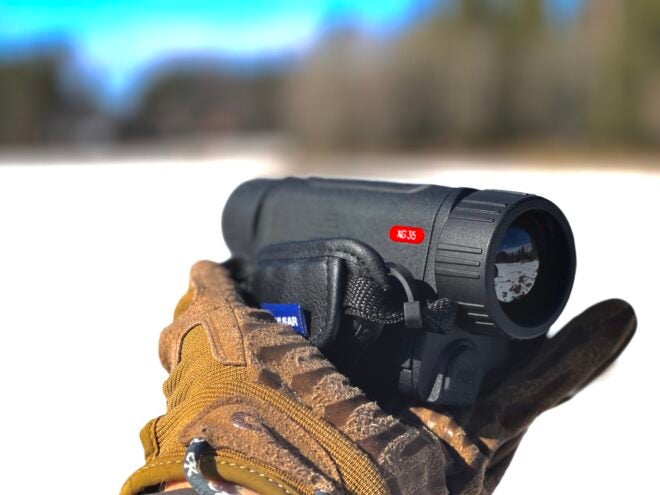
Pulsar Thermal Reviews @ TFB:
- TFB Review: Pulsar Telos LRF XP50 – New Upgradeable Thermal Monocular
- TFB Review: Pulsar Thermion DUO DXP50 Daytime & Thermal Riflescope
- TFB Review: Pulsar Merger LRF XP50 Thermal Binoculars
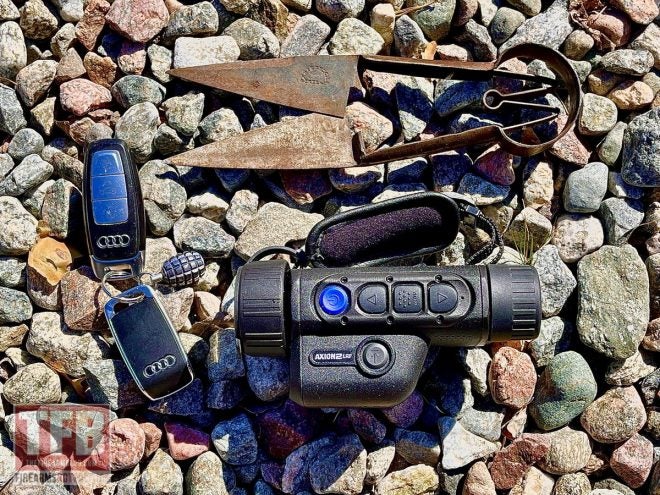
Thermal monoculars are optical devices designed to detect and visualize infrared radiation emitted by objects and living organisms. They operate based on the principles of thermal imaging, allowing users to see heat signatures in the form of varying temperatures. Unlike traditional night vision devices, which rely on ambient light, thermal monoculars can provide clear images in total darkness or adverse weather conditions.
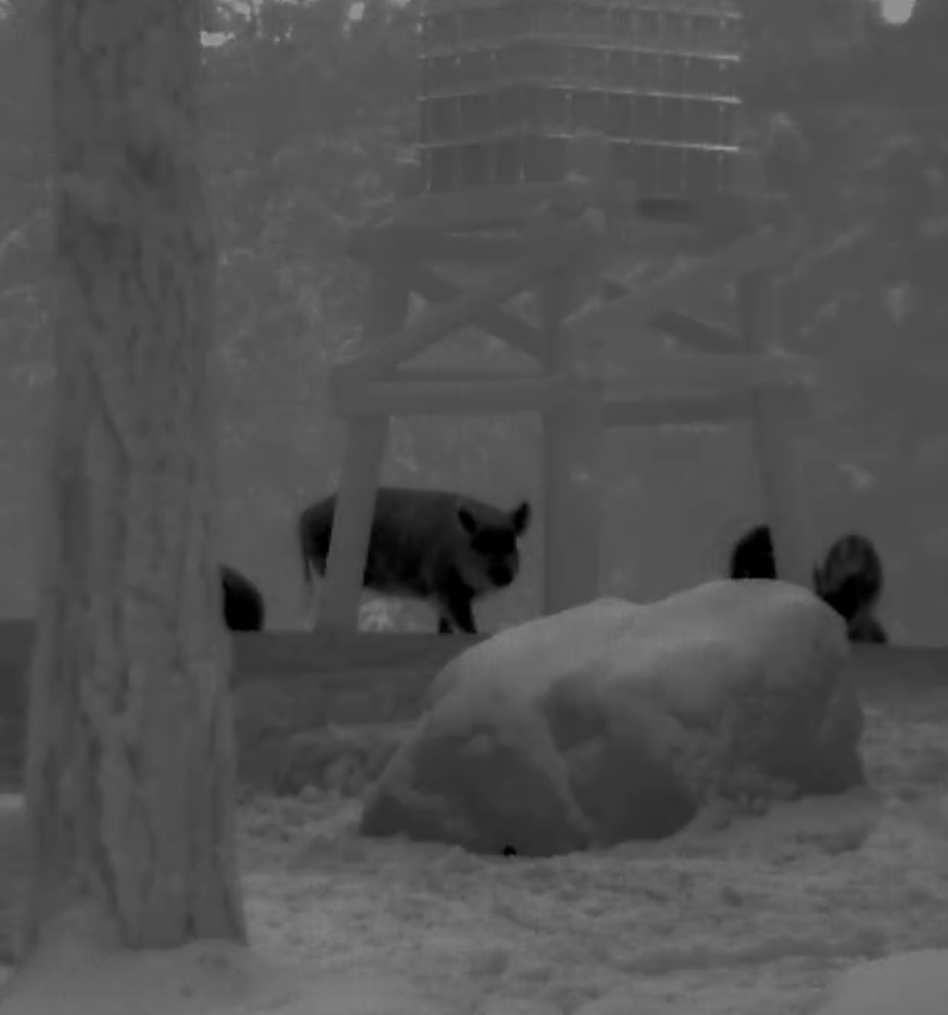
I found a squirrel on one of my walks.

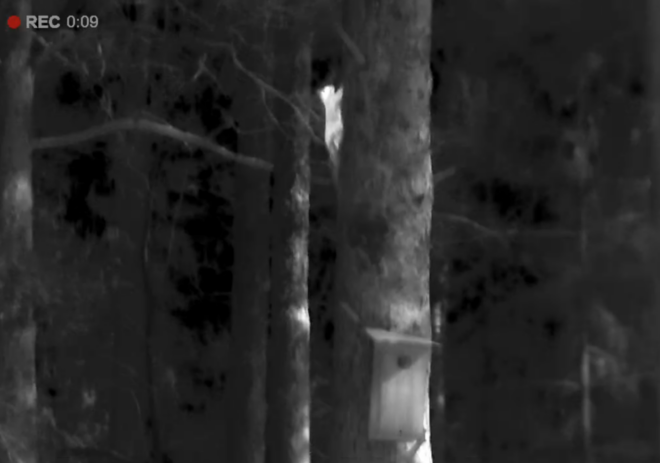
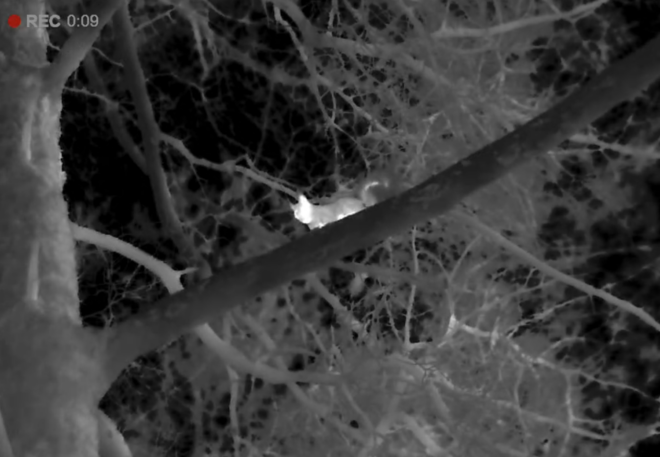
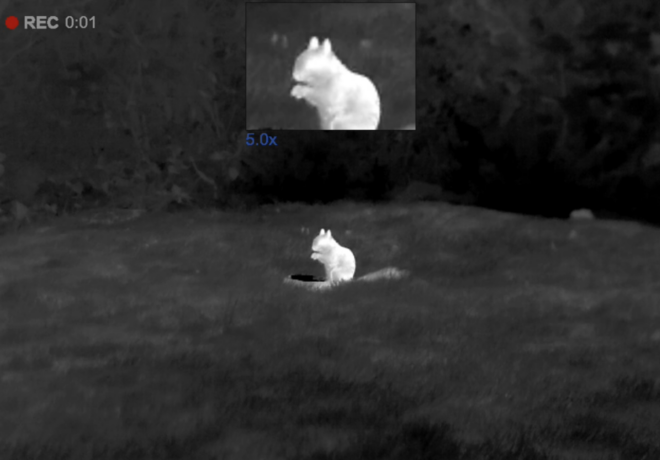
Most people will probably use the Axions to discover wild animals like these wild boars in the forest.
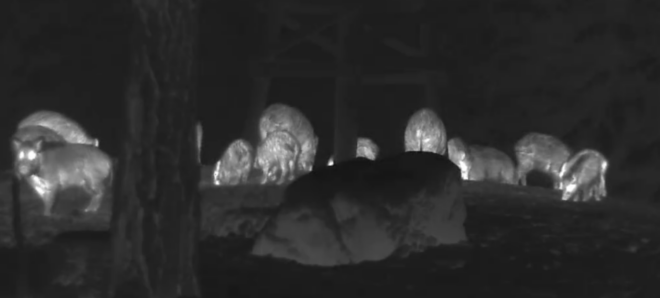
A roe deer in the middle of the night at 82 meters. Pitch black outside, with some fog from the field.
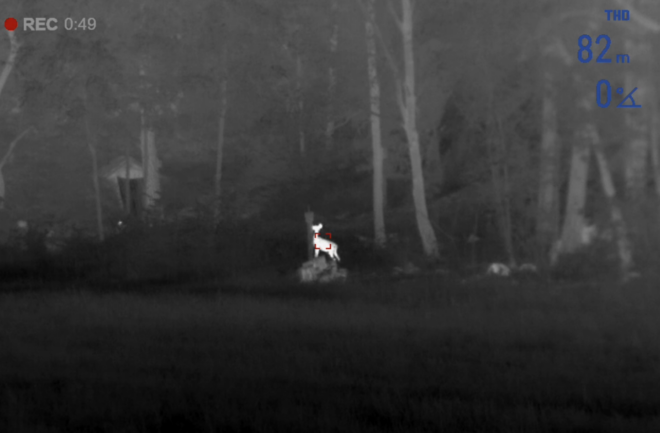
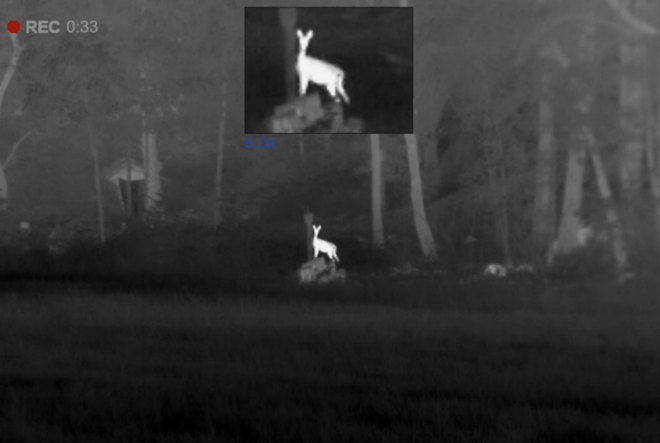
The Pulsar Axion 2 XQ35 hand-held thermal imager is equipped with a European Lynred sensor with a resolution of 384×288 pixels (pixel size 17 microns), which manages to capture thermal signals even under difficult observation conditions, such as rain, fog and high humidity. The detection range is about 1300 meters. There is also a Pro version, with even higher thermal sensitivity (<25mK NETD sensor vs. <40mK, lower is better.)
Below: Both Axion 2 monoculars in this test look the same, apart from a small logotype on the side – red or blue. The red is the better performer. The thing in the middle is the Pulsar Talion XQ38 – Budget Thermal Riflescope.
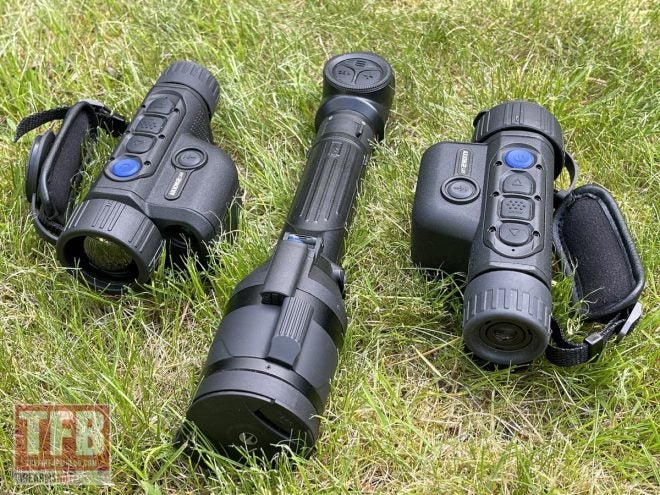
If that performance is not enough, you can go from the “Q” model to the “G” model, as the Axion 2 LRF XG35 features an even better thermal sensor with 640×480 pixels, (pixel size 12 microns), and an AMOLED HD screen to display the better image quality. Both models use a Germanium F35/1.0 lens. The detection range is about 1700 meters.
Basic Specifications of the two models:
Axion 2 LRF XQ35
Magnesium Alloy Housing & High IP class
The Axions are very compact in size, and even the LRF versions will fit most pockets. They have been designed to withstand hard use, with a magnesium alloy housing to make it light, but also very strong. The dimensions are 152x74x75 mm, with a weight of 0.47 kg, including the APS5 battery.
The package is PХ7 (waterproof), and although I wouldn’t do or recommend it, I’ve seen people drop them in water. A thermal isn’t of much use underwater anyway, but it’s nice to know there’s a high level of protection from the environment.
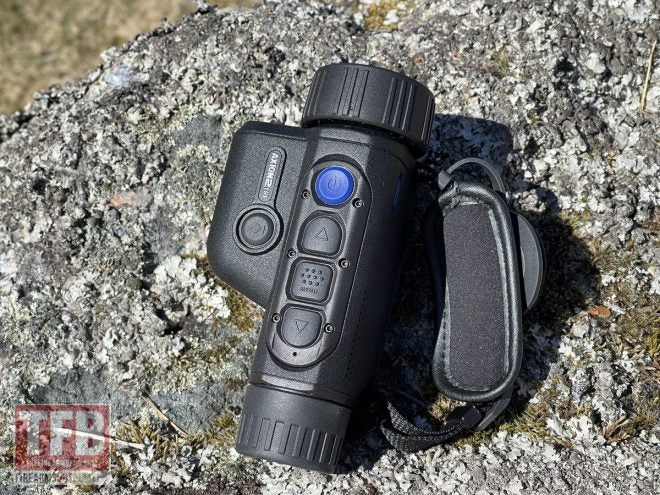
A high-capacity APS5 rechargeable battery provides up to 11 hours of continuous operation of the thermal imaging device on a single charge. The battery is removed from a battery housing and replaced with a new one in seconds. The battery is charged in a special charger or inside the device from a PC, household power system or power bank via USB-C. The same sources are used for the external power supply of a thermal imaging device. Below: some wild boar at the feeder, close distance.
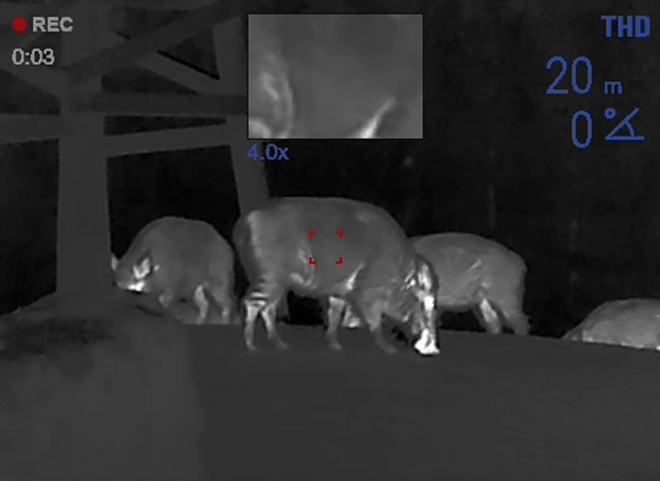
Pricing
The Axion 2 LRF XQ35 seems to sell for about $2,499.97 in the USA, and $1,999.97 for the version without the LRF.
Because of the much more powerful thermal sensor, there’s quite a jump in the price of the XG model. Current pricing in the US is about $3,499.97 and $2,999.97 without LRF.
Below: It won’t fit the pocket of your jeans unless you’re XXL. But I’ve used the Axions, even with the LRF which extends the width considerably, in the pockets of my jacket. The best thermal is the one you brought? As long as the batteries are charged, of course.
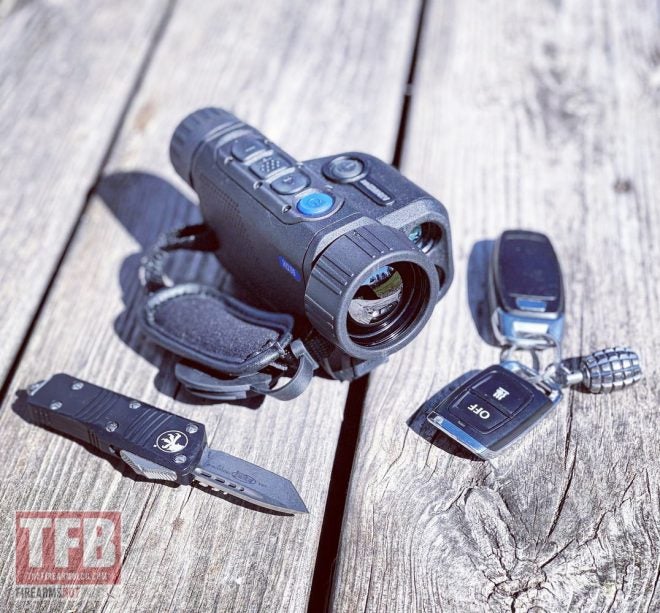
Night hunting has really become a “gadget sport”, but it also makes it more exciting to know what’s going on in the darkness.
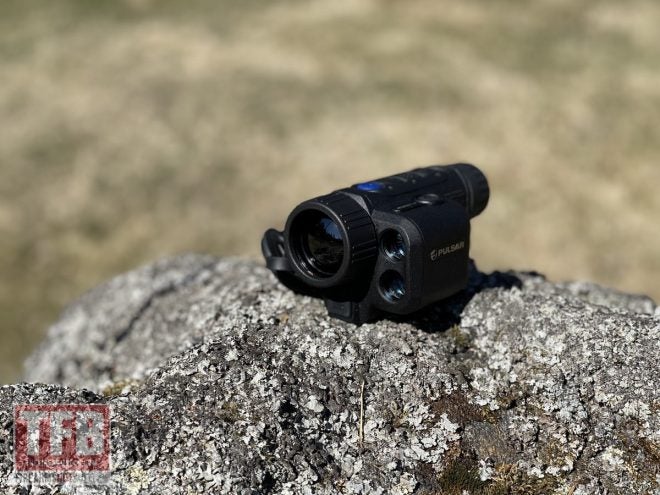
Below: The buttons kind of explain themselves: on/off, up/down and menu.
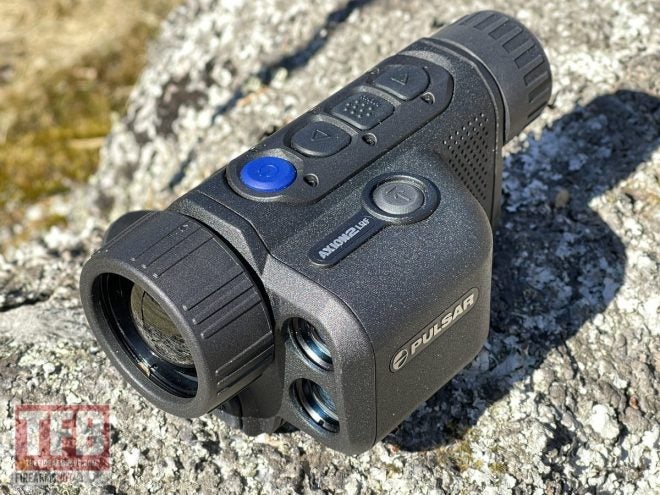
Below: In a world where most thermals seem to be made in the People’s Republic of China, Pulsar offers a nice variety, which is a necessity for some buyers. These are all made in Europe, Latvia or Lithuania. Pulsar have their own factories, making everything from the body, to metal and plastic parts. They even have their own SMD (Surface Mount Device) production line for electronics in Latvia.
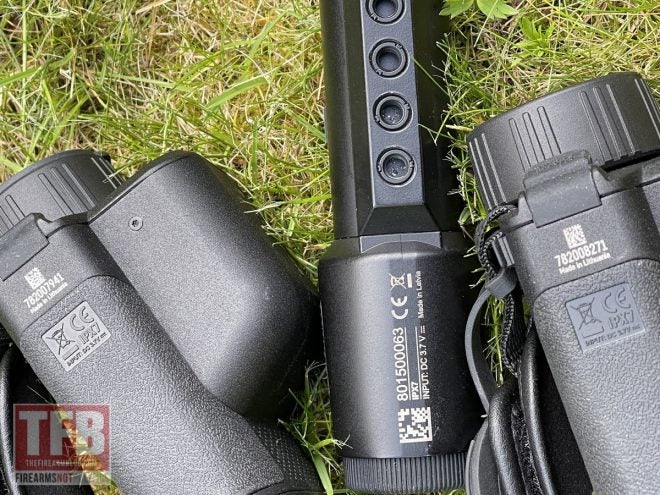
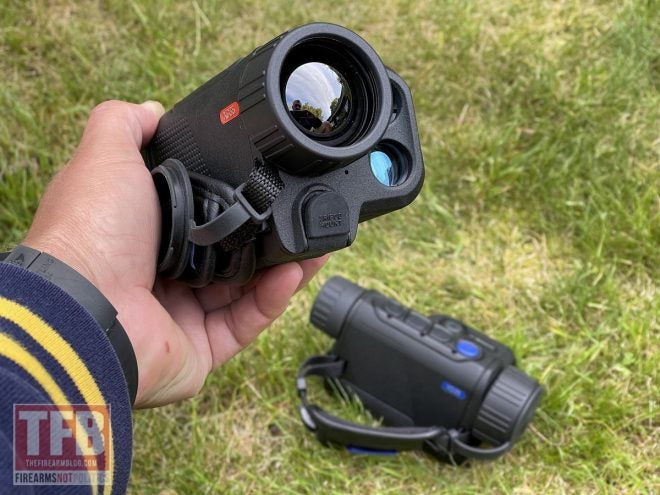
Axion 2 XQ35 (blue) and XG35 (red). Red is better in terms of image quality. Talion XQ38 behind, reviewed here.
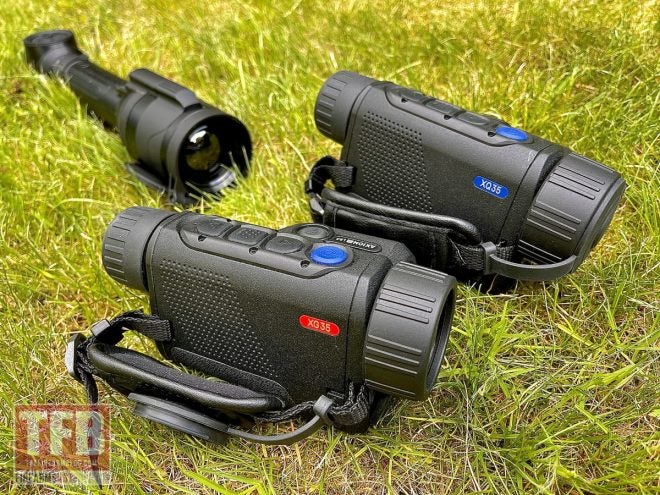
The Surron electric bike is great for riding as silently as anything can do at 45 km/h (legally). Animals don’t know what’s going on, the electric evolution hasn’t caught them yet.
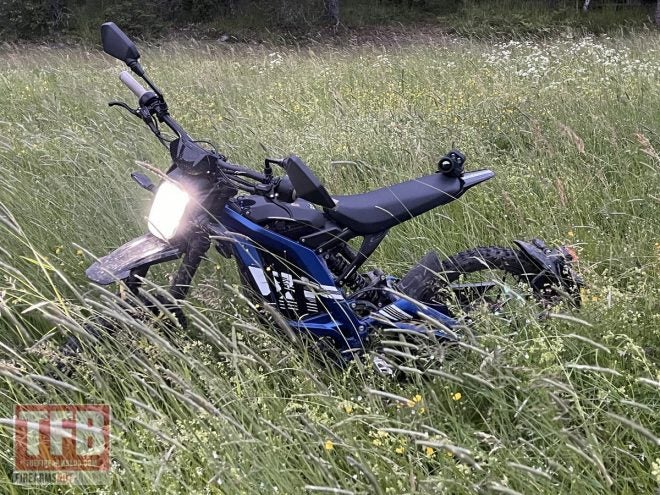
Below: One could say that the Axion blends in on this Surron e-Bike, with black and blue.
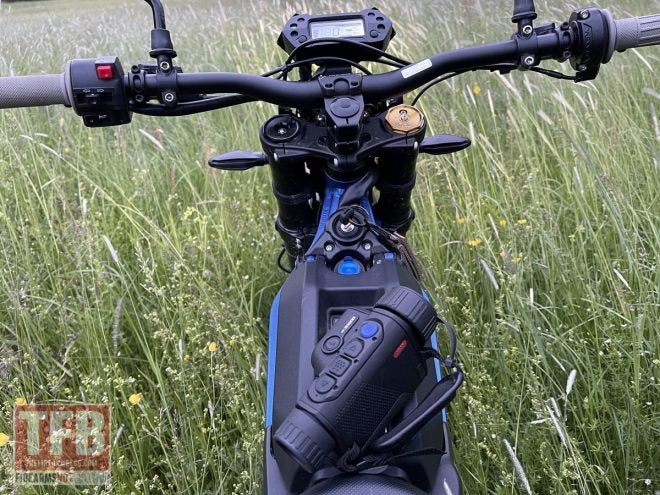
The XG35 in the archipelago, where it makes more sense than I had ever thought. In the blurry behinds, the rocky subsoil of reddish gneiss, around 1.8 billion years old, emerges and presents itself with rounded edges and numerous grinding marks. A region left behind by Ice Age glaciers up to about 10,000 years ago. The backpack is made by Snigel Design and works well for a picnic in the summer.
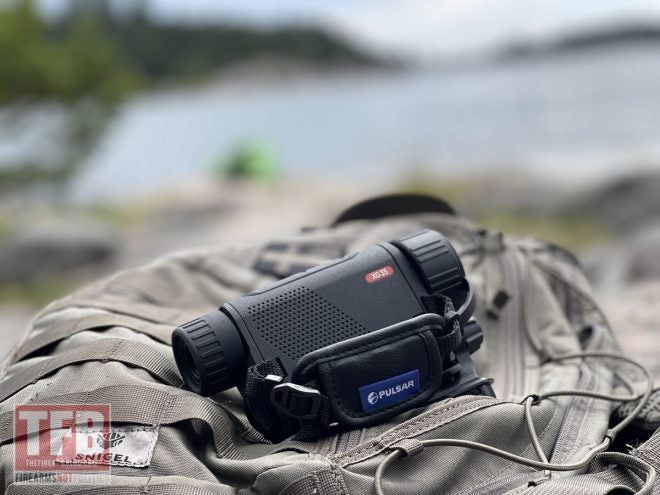
I presume boaters and sailors don’t buy thermals, but they should. It’s an excellent tool, for finding a safe harbor or if someone goes AWOL from a ship. With the Axion, it was easy to see what was going on on the sailing boat to the left, counting people, etc. In a cold ocean, the Axion would help you find the warmth of a head, sticking up and looking for rescue. Thermals (albeit more powerful) are what the Coast Guard helicopter would use to find you.
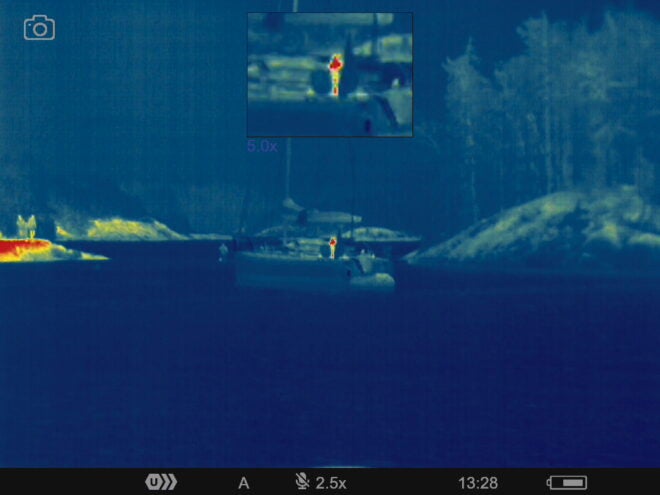
The thermal image above is from the sailing boat to the left.
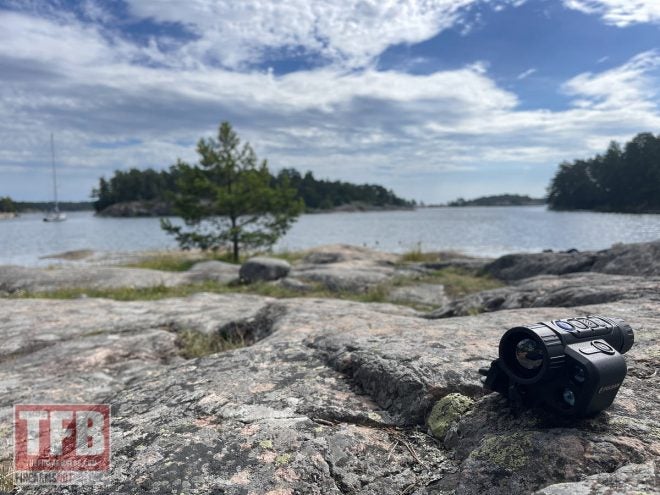
Most likely a fallow deer.
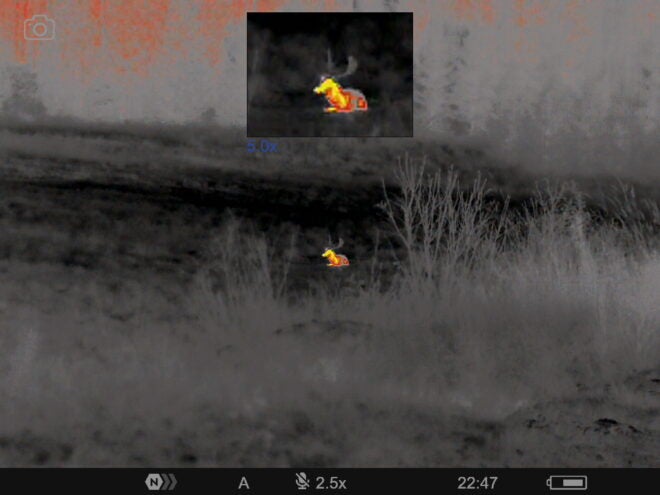
This is from a driven hunt in the winter. There were hunters all along the line, with dogs and their handlers in the forest. Fairly low visibility and difficult to know what was going on in the forest. But with the thermal, I could easily spot the hunter to the right, and get a distance. Using a thermal like this creates safety, don’t shoot in this direction!
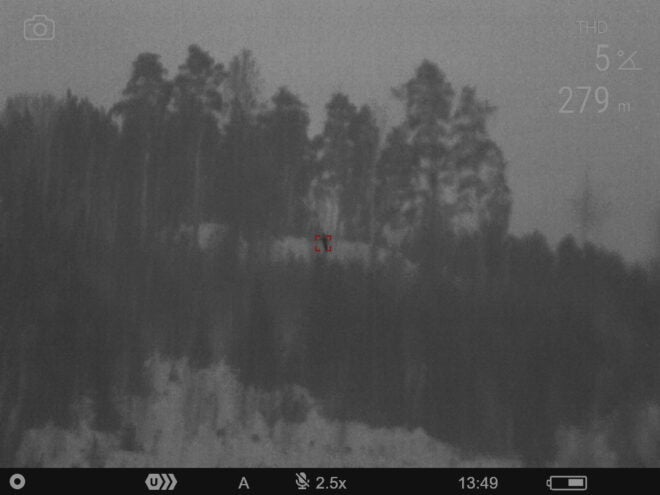
A roe deer walks on a hidden path in the forest. Complete darkness outside.
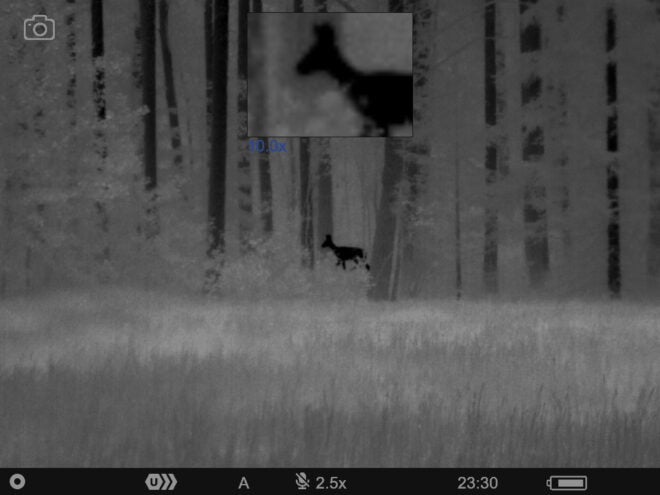
Two kids fishing in a boat on a small lake.
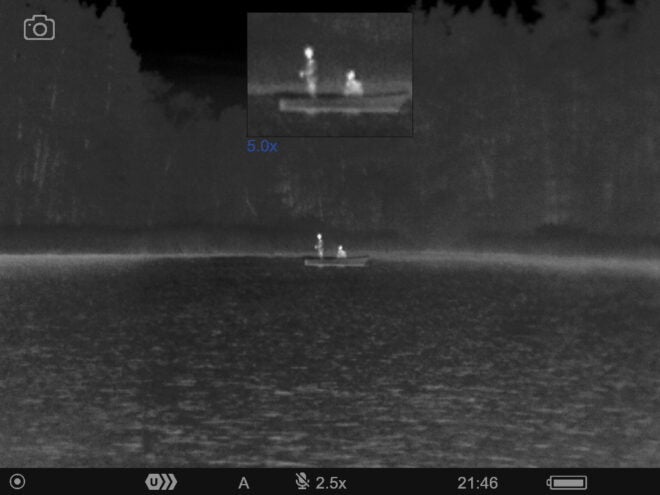
Bids and drones come out really well on thermal.
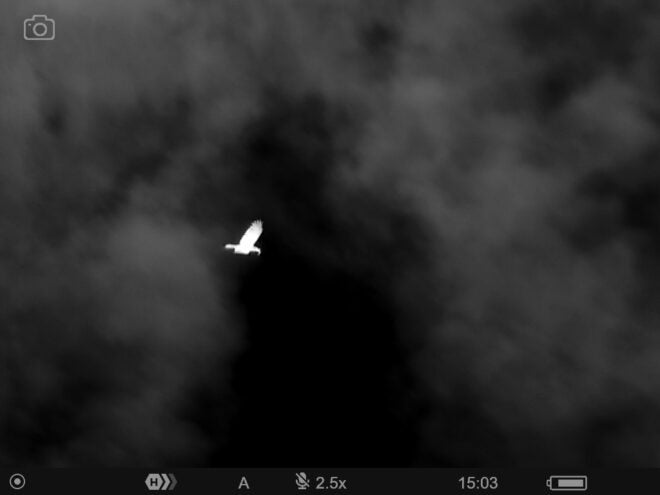
A bunch of wild boar.
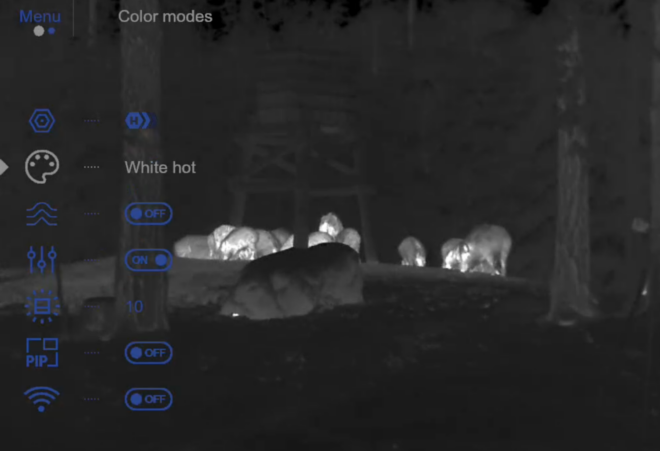
I hear a sound. Is the train coming from behind or?
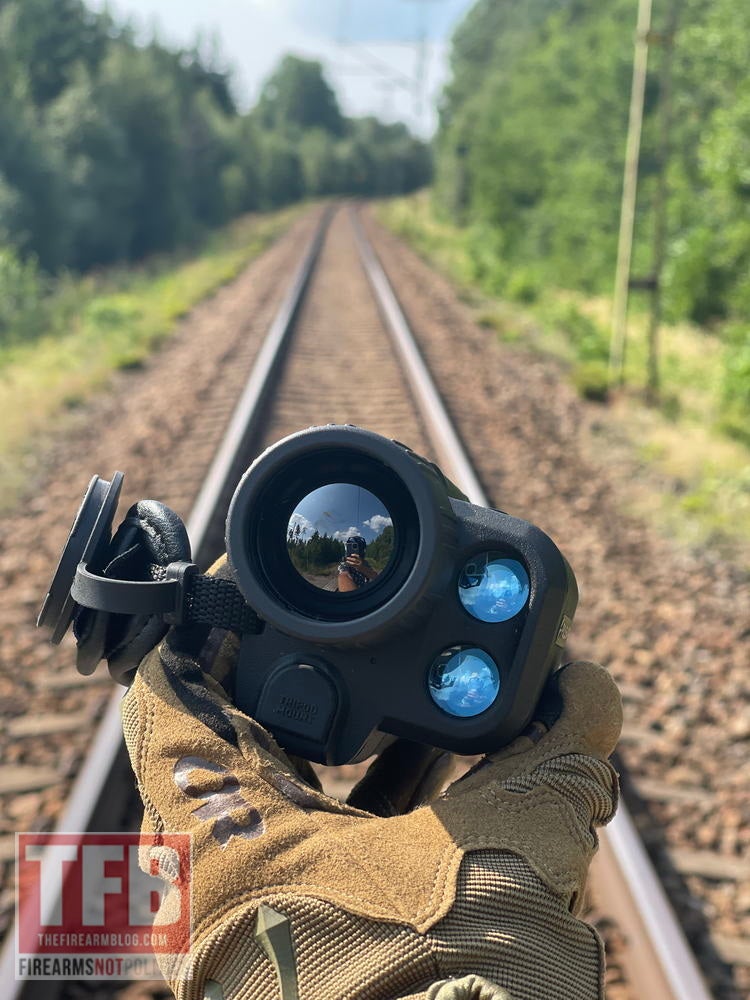
Below: Surron e-Bike and the Pulsar Axion, great tools for an adventure created by yourself. Go bird watching, or find animals you would never have seen otherwise. Thermals work during the day too!
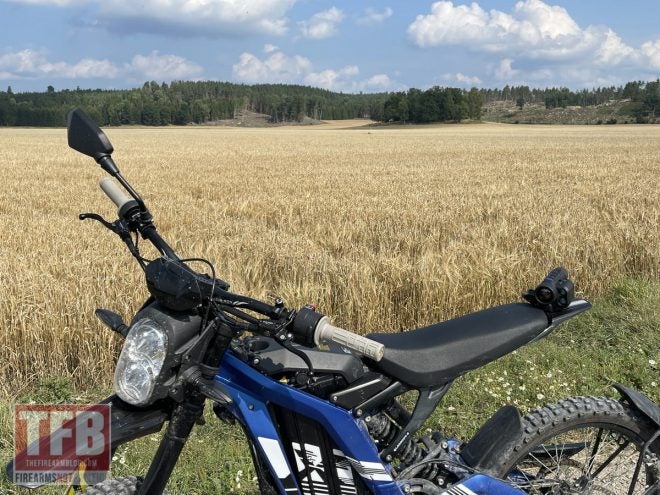
Below: This is Troy, the grey and great lab. Great dog and companion, love him and he loves everyone.

Most of the time white or black hot works better than red hot.


Below: Human walking at 86 meters.
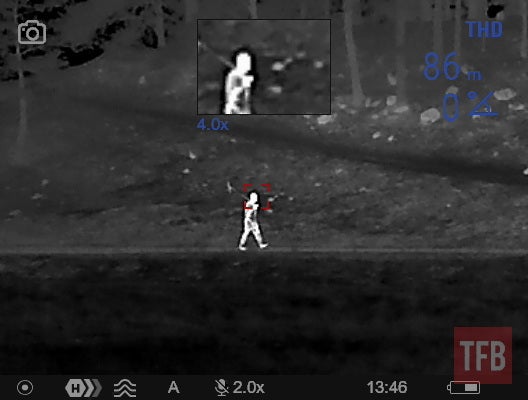
Below: Field hare at 45 meters. Note that if you’re seeing this live it’s much easier to ID the object, based on how it moves, what it looks like, etc. Still images are very limited, and look much worse here than “live”.
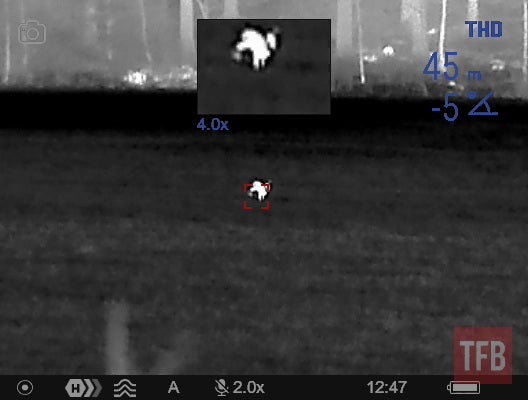
And at 124 meters. The building to the upper left is about 320 meters. If there was anything else “hot” on the field, it would have shown.
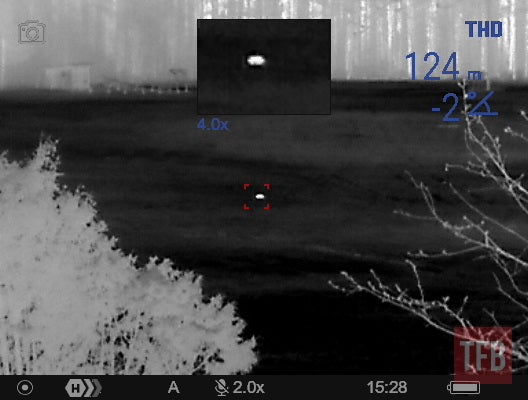
Below: Wild boar in the forest.
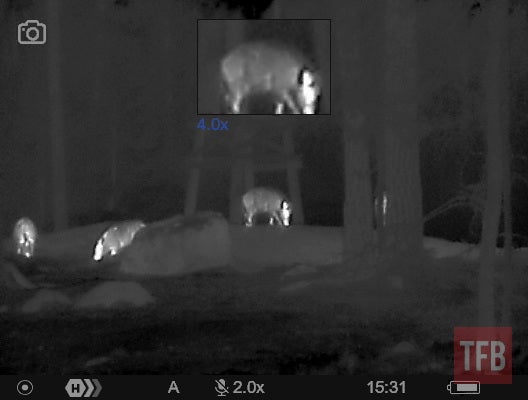
Below: Deer at 45 meters.
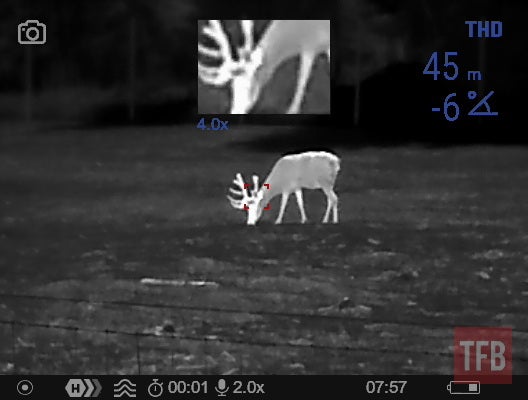
Coming to a conclusion
I’ve tried more or less all the variants of the Axion 2 models, so it’s difficult to keep all details apart. In short, the more money you spend on the sensor, the better image quality you will get. The cheapest unit will still be useable, you’ll just be able to see less details.
They all have very high build quality, I’ve had zero issues with any of the units I’ve used. They’re very portable and easy to use, and they don’t mind rough treatment and some wet weather.
I don’t know the design criteria, but Pulsar should probably have gone for a larger screen size than 640×400 pixels in the Axion 2 XQ35. It seems this limits the image quality that you’re able to get out of the unit. If I had to guess, this was to push the price below a certain point rather than anything else.
Also, depending on your hands and how you hold the device, it can also be a bit hard to reach all the buttons without taking a new grip. The laser rangefinder prodtrudes too much, so it would be nice if Pulsar could source smaller components for their next generation. But generally, it’s very difficult to find anything to complain about.
Below: Sometimes, thermals are not needed to detect heat sources in the forest.
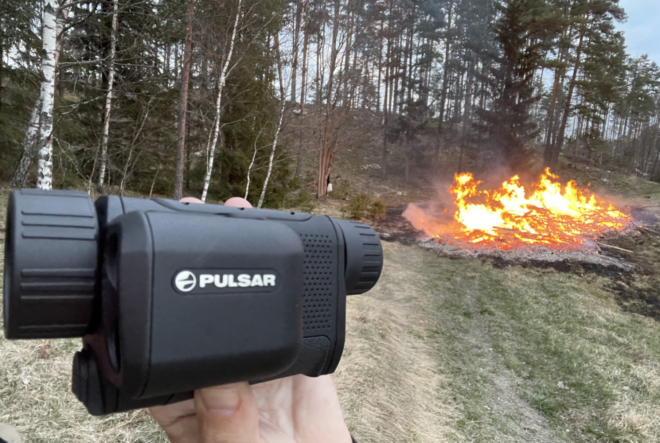
If you’re looking for something more powerful, in fact, what in my opinion is the best thermal monocular on the market at this point in time, check out the Pulsar Telos LRF XP50. If you want something smaller and cheaper, then Pulsar’s Axion XM30S still delivers. There are also more variants of the Axions to choose from, and I’m sure the Axion product line will keep growing during 2024.
You can find all of Pulsar’s Thermal Imaging Monoculars here.
We are committed to finding, researching, and recommending the best products. We earn commissions from purchases you make using the retail links in our product reviews. Learn more about how this works.
 Your Privacy Choices
Your Privacy Choices